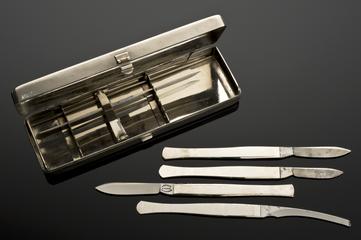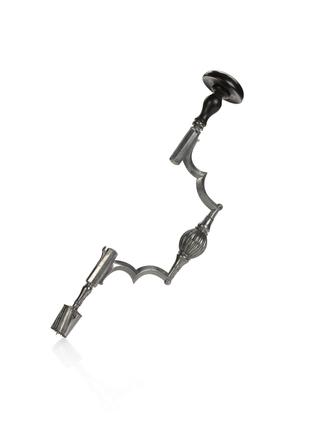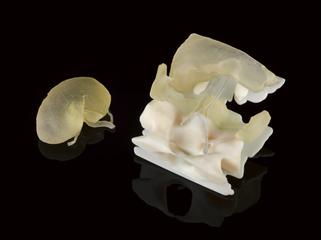
Obsidian possibly used in trephination experiments
- PART OF:
- 4 pieces of obsidian






One piece of obsidian, possibly used as trephining instrument by Dr. T. Wilson Parry, in experiments on neolithic trephination, England, 1918-1920
Obsidian is a naturally occurring volcanic glass. It is a hard wearing material and can cut through materials such as marble and bone. It is shown here with a piece of skull trephined with an obsidian knife. The hole produced is 19 mm in diameter. The inscriptions tells us that it took half an hour to produce the hole and that the skull belonged to a 44-year-old male. This experiment was carried out by Thomas Wilson Parry (1866-1945), an English doctor who was interested in the tools and techniques of Neolithic trephination. Parry collected skulls from around the world and experimented on them with different types of tools.
Details
- Category:
- Surgery
- Collection:
- Sir Henry Wellcome's Museum Collection
- Object Number:
- A652069/1
- Materials:
- obsidian
- Measurements:
-
overall: 32 mm x 82 mm x 58 mm, .08kg
- type:
- trephine
- credit:
- Loan, Wellcome Trust




